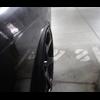Solid Vs Sprung Puk Clutch
Announcements
-
Similar Content
-
Latest Posts
-
So, I'll be first to admit my gauges in the BMW are a little lacklustre. I have no oil pressure and I have no water temp. Usually at the track I have these on my phone during sessions but it's small and I struggle as it is without squinting at my phone. I'm wondering if anybody has mounted an iPad on the steering column as a makeshift digital dash? Is this a thing? My tuning app will let me configure some gauges and make a dashboard and I was thinking this could be a better option than trying to make stuff out on my phone.
-
By Dose Pipe Sutututu · Posted
Please also tow another Skyline soon too haha -
By Dose Pipe Sutututu · Posted
Wild idea, can you do half and half? Lol.
-






Recommended Posts
Create an account or sign in to comment
You need to be a member in order to leave a comment
Create an account
Sign up for a new account in our community. It's easy!
Register a new accountSign in
Already have an account? Sign in here.
Sign In Now